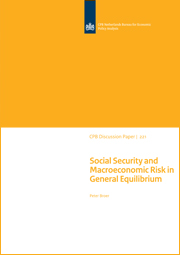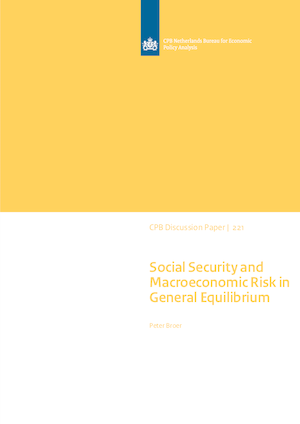Social Security and Macroeconomic Risk in General Equilibrium

The sources of risk are productivity shocks and depreciation shocks. The risk profile of pensions differs from that of financial assets because pensions are linked partially to future wage rates and productivity. The model is used to discuss the effects of changes in the social security system on labor supply, private saving, and welfare in a closed economy. The author finds that switching from Defined Benefit to Defined Contribution is generally welfare improving, if current generations are compensated, while a switch from a wage-indexed Defined Benefit system to a price-indexed system is generally welfare deteriorating. A reduction in the size of the pay-as-you-go system does not yield clear results: if current generations are compensated, some future generations lose, and others gain.
